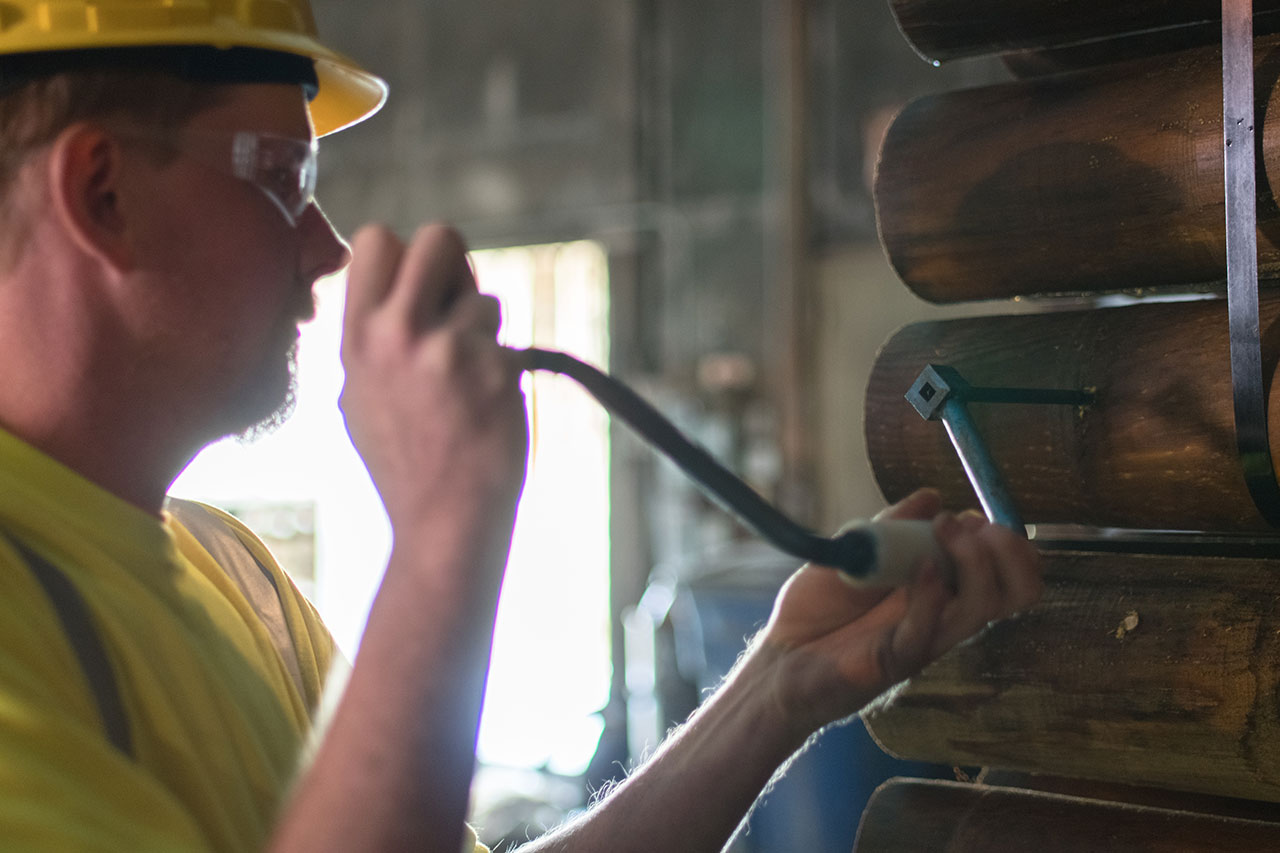If you’re in the market for treated round wood posts, you most likely have come across .40 vs .60 CCA treatment. These numbers refer to the amount of preservative in the wood, but what does this really mean for your next project? Let’s talk about it and discuss the differences so you’re able to choose the best treatment for your needs.
What is CCA Treated Wood?
CCA stands for Chromated Copper Arsenate, which is a wood chemical preservative that is pressured into the wood post, to prevent rot, decay, and insect infestation. It has been used for decades in the wood and post industry, for agricultural, industrial, and marine applications because of its known long-lasting protection. The only two species of wood in our region that will take CCA treatment and absorb it effectively is red and southern yellow pine.
Understanding the Numbers
The numbers (.40 and .60), refers to the retention level, meaning the pounds of preservative retained per cubic foot (pcf) of wood after pressure-treatment. For .40 CCA, there is .40 pounds of preservative retained per cubic foot of wood, and for .60 CCA there is .60 pounds of preservative per cubic foot of wood. Overall, the higher the number, the more preservative is retained in the wood — and generally, the more resistant it is to decay in harsh environments. However, both are suitable for in-ground contact and deliver excellent performance.
.40 CCA Pressure-Treatment in Wood Posts
The retention level of .40 CCA treatment is 0.40 lbs/ft³, and the post longevity of this treatment will typically last around 25-30 years. Typical uses of this treatment include pasture fencing and general farm and agricultural use with light to moderate ground contact. This kind of treatment is more affordable, but still offers exceptional protection against rot and decay.
.60 CCA Pressure-Treatment in Wood Posts
.60 CCA posts have a 0.60 lbs/ft³ retention level, and should last more than 30 years against any fungal decay, rot, or insect damage. These treated posts are generally used for orchard trellis systems, deer fencing, or in wet, clay, or high-moisture soils. Although this option will be more expensive, it provides maximum protection against rot and insect resistance.
Tip: It is extremely important that your CCA-treated posts are properly pressure-treated. During proper treatment, high pressure is used to force the CCA deep into the wood fibers, ensuring consistent protection throughout the post. While some companies may claim their posts meet a certain retention level, in reality they may have only treated the outer surface—”turning the outside green”—without adequate penetration into the core. This leaves the interior vulnerable to decay and greatly reduces the post’s lifespan.

Strength vs. Longevity
The CCA treatment itself does not determine the posts’ strength — that is up to the species of the wood and post diameter. All of our wood posts are made from red pine species, one of the few types of wood that can absorb CCA efficiently. However, the CCA treatment determines the post’s durability and lifespan. Ultimately, .40 and .60 CCA posts made from the same wood are equally strong on day one—the difference is how long they last in the ground over time. The article, Comparison of Wood Preservatives in Stake Tests, discusses the longevity of CCA-treated wood if properly treated to certain retention levels.
Additionally, another important factor is making sure your posts are properly dried. If the wood is not properly dried naturally or by a kiln, and it is still wet when receiving treatment, CCA will not be retained within the wood. This will cause the post to rot, decay, and potentially get infested with termites.
Service Life and Warranty
When looking for treated posts, it’s important to look for a strong warranty on the posts, which is a good indicator that the post was properly treated. At West Branch Wood Treating Sales, we offer both .40 CCA and .60 CCA treated wood posts. Our .40 CCA posts come with a 25-year limited warranty, while our .60 CCA posts are backed by a 30-year limited warranty. These strong warranties reflect our confidence in the durability and longevity of our products. When you choose West Branch Wood Treating Sales, you’re choosing wood posts built to last for decades.
Conclusion
Overall, the main difference between .40 CCA and .60 CCA treatment is the chemical retention level once the wood post is treated. The chemical preservative provides long-term protection against fungal decay and insect infestation. There are pros and cons for each, however both serve one purpose: to extend the lifespan of the post.
Looking for More Information on Our Products?
Reach Out and Experience the Difference
with West Branch Wood Treating Sales.
Contact us today for a free estimate or any additional inquiries.
